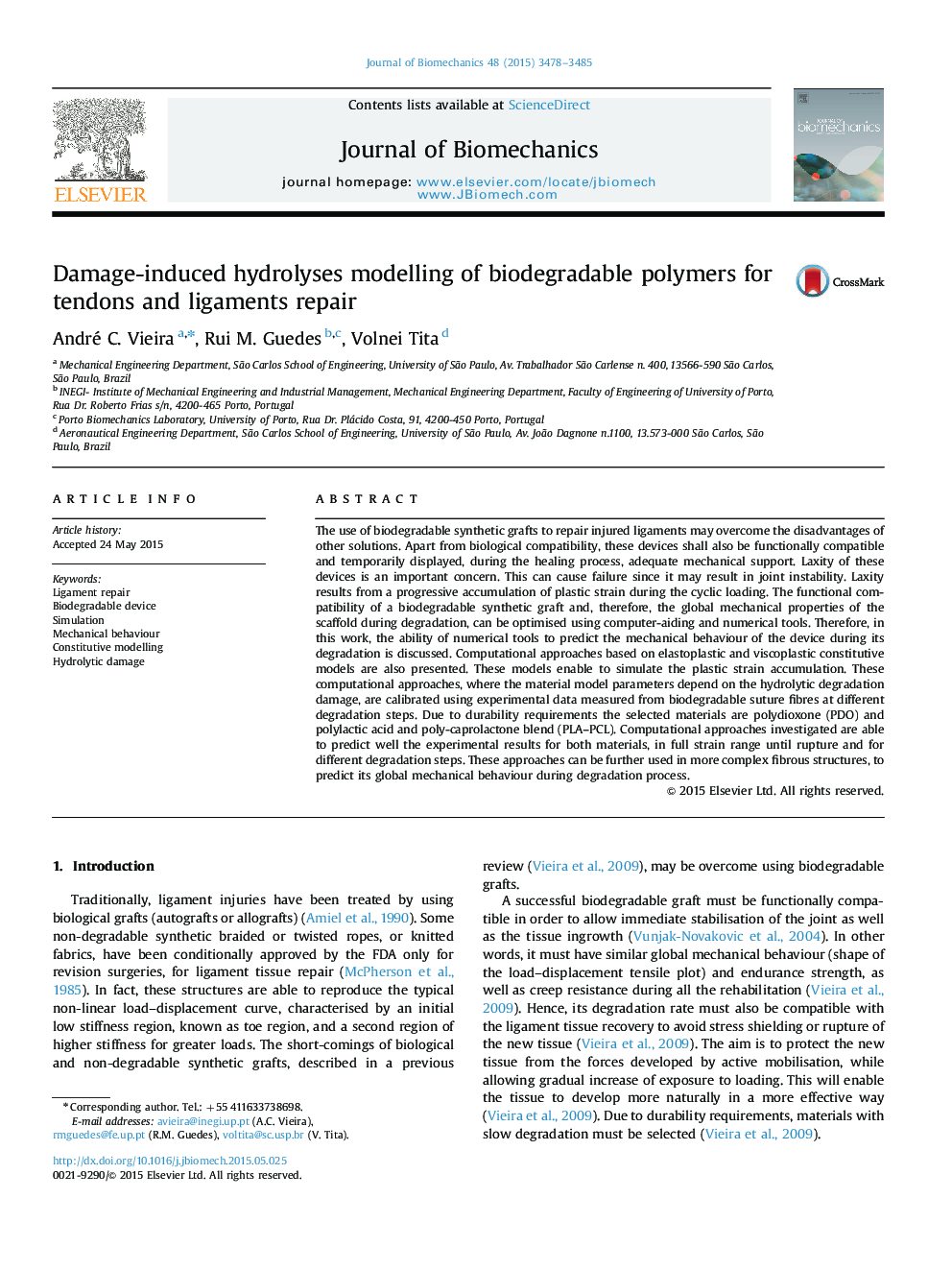| Article ID | Journal | Published Year | Pages | File Type |
|---|---|---|---|---|
| 10431333 | Journal of Biomechanics | 2015 | 8 Pages |
Abstract
The use of biodegradable synthetic grafts to repair injured ligaments may overcome the disadvantages of other solutions. Apart from biological compatibility, these devices shall also be functionally compatible and temporarily displayed, during the healing process, adequate mechanical support. Laxity of these devices is an important concern. This can cause failure since it may result in joint instability. Laxity results from a progressive accumulation of plastic strain during the cyclic loading. The functional compatibility of a biodegradable synthetic graft and, therefore, the global mechanical properties of the scaffold during degradation, can be optimised using computer-aiding and numerical tools. Therefore, in this work, the ability of numerical tools to predict the mechanical behaviour of the device during its degradation is discussed. Computational approaches based on elastoplastic and viscoplastic constitutive models are also presented. These models enable to simulate the plastic strain accumulation. These computational approaches, where the material model parameters depend on the hydrolytic degradation damage, are calibrated using experimental data measured from biodegradable suture fibres at different degradation steps. Due to durability requirements the selected materials are polydioxone (PDO) and polylactic acid and poly-caprolactone blend (PLA-PCL). Computational approaches investigated are able to predict well the experimental results for both materials, in full strain range until rupture and for different degradation steps. These approaches can be further used in more complex fibrous structures, to predict its global mechanical behaviour during degradation process.
Related Topics
Physical Sciences and Engineering
Engineering
Biomedical Engineering
Authors
André C. Vieira, Rui M. Guedes, Volnei Tita,
